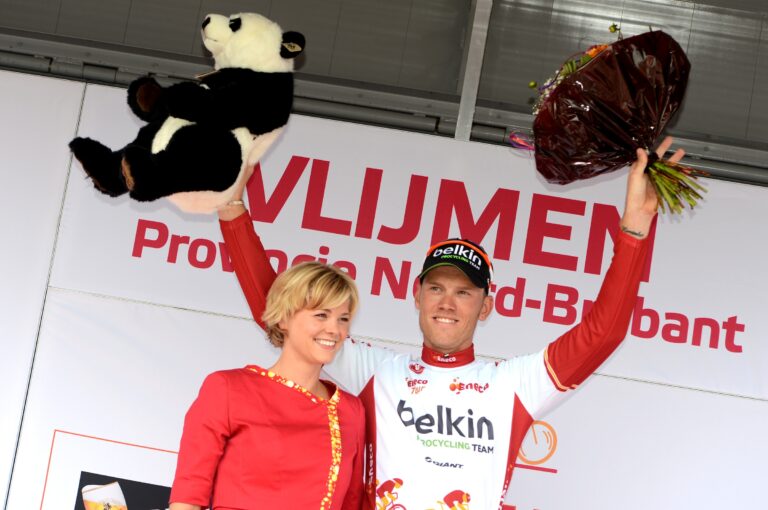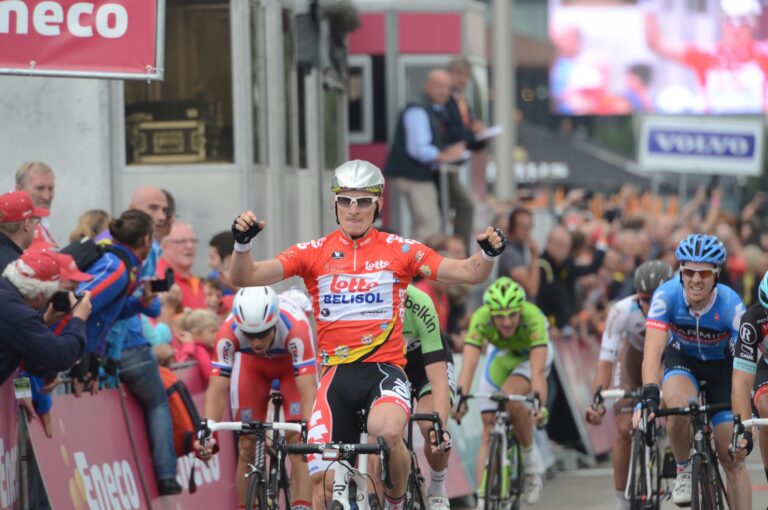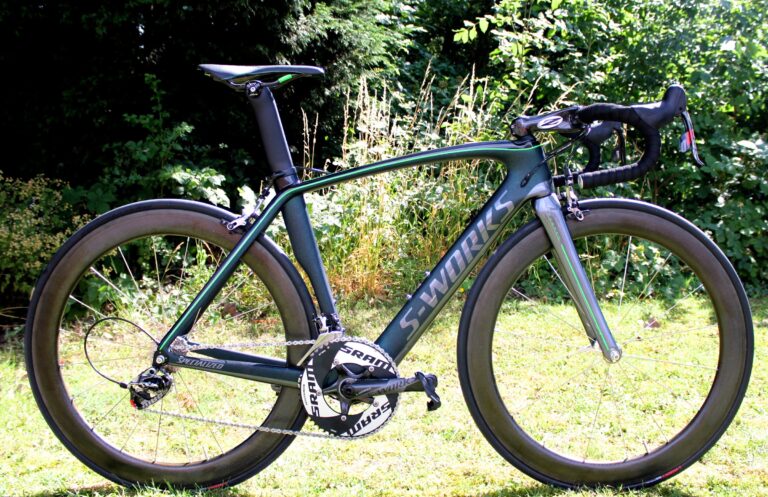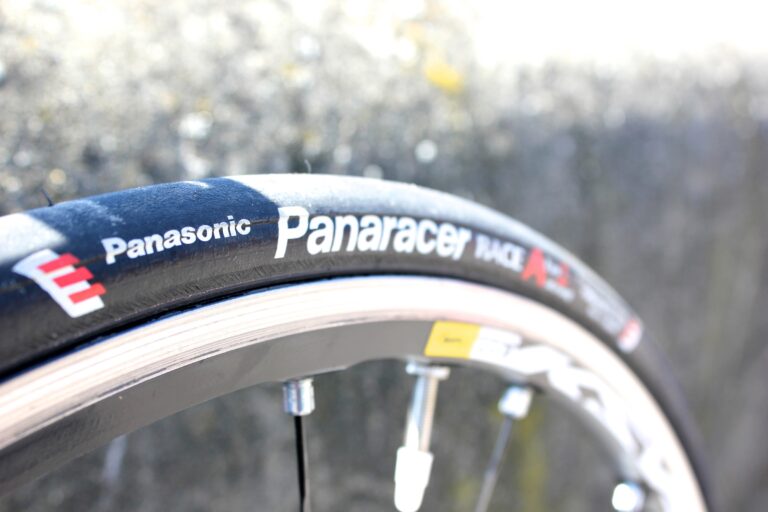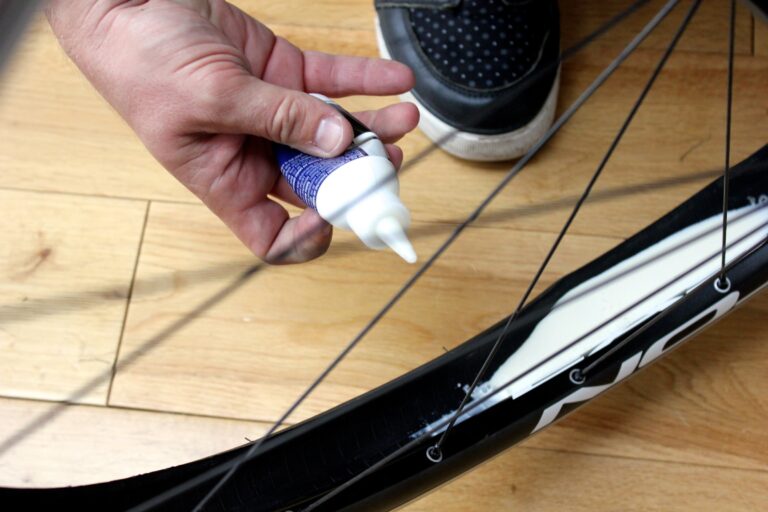Trek World, the Wisconsin-based firm’s annual dealer and media jamboree, gives us the chance to check out what’s new for the year ahead.
Trek’s road range has undergone significant change over the past 12 months with the launch of the aero Madone and the Domane comfort bike – both of which we reported on from Trek World 2012 – so updates this time out are more subtle.
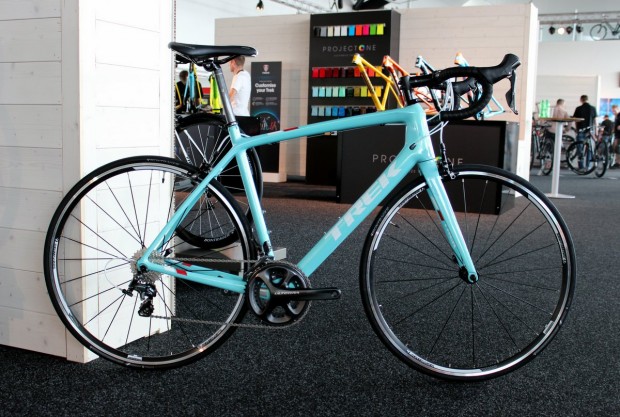
But there’s still plenty to report on, including an aero update to the 4-Series Madone, a makeover for the Domane 2-Series, the new Crockett cyclo-cross bike and more.
It’s also worth noting Trek have scrapped the model year concept – whereby bikes are traditionally launched in the summer, but are often not available until much later in the year – for a launch-it-when-it’s-ready approach. It’s a decision influenced by Apple’s product life cycle and, according to Trek, comes with two main benefits: first, bikes are launched when they’re ready, and are not dictated by the beginning or end of a model year, and new models should be available at Trek dealers almost immediately after they’re launched. Makes sense to us.
So what’s new? Skip to a section below or scroll through for a detailed overview of the highlights of Trek’s 2014 range.
Madone 4-Series gets aero update
Madone 4-Series and Domane 4-Series now available in Project One
Domane 2-Series gets a makeover
Madone 6-Series and 7-Series now even lighter
Crockett and CrossRip cyclo-cross unveiled
Speed Concept time trial bike redesigned
Madone 4-Series gets aero update
Trek unveiled the aero Madone ahead of the 2012 Tour de France. In short, the frame, previously only available in 5, 6 and 7-Series models (each made from a more advanced grade of Trek’s OCLV carbon fibre), uses Kammtail tube profiles, while the front brake is part-integrated with the headtube/fork and the rear brake is hidden behind the bottom bracket.
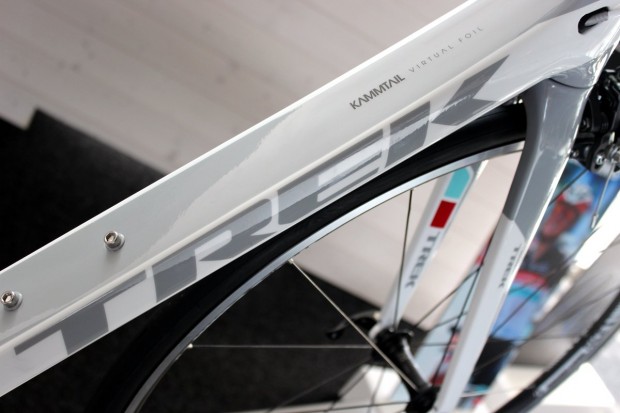
Now the 4-Series frame has had a partial aero updated, in that the frame boasts the same Kammtail tube profiles, but with a traditional brake setup. Trek say that’s a decision made partly on account of price but more to offer a halfway house for riders who want a conventional brake setup, perhaps concerned (unduly, Trek say) with the cleanliness or adjustability of the hidden rear brake. The 4-Series frame also use a conventional seatpost.
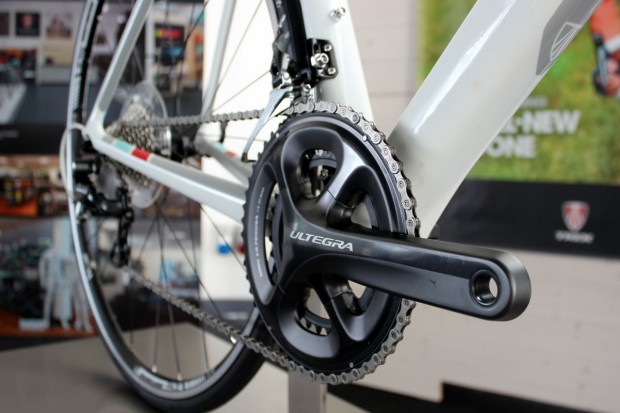
Three models (4.9, 4.7, 4.5) make up the 4-Series range, with the top-end 4.9 available in the new ‘leopard blue’ colourway also found on the Radioshack-Leopard team bikes. The Madone 4.9 (£2,600) is equipped with 11-speed Shimano Ultegra Di2, while the 4.7 and 4.5 come with mechanical 11-speed Ultegra.
While we’re talking Kammtail, the aluminium 1-Series frame has also been updated and is now based around Kammtail-inspired tube profiles. They’re not technically Kammtail but Trek tell us they’ll still bring some aerodynamic benefit, as well as boosting stiffness.
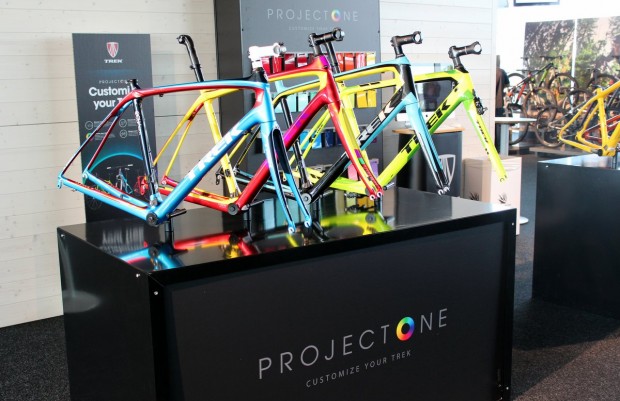
Madone 4-Series and Domane 4-Series now available in Project One
Project One, Trek’s customisation programme, was previously only open to 7-Series and 6-Series bikes (whether it be the Madone or Domane) – but now it’s also available on 4-Series machines.
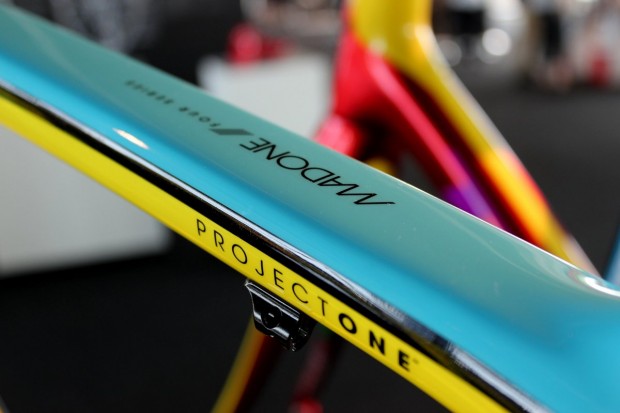
That makes Project One significantly more affordable (starting in the region of £2,300) and opens the scheme, which allows customers to fully customise their machine, to a wider market. Trek say there are 22 customisable parameters, from colour, to component choice, to fit. Trek had some eye-catching examples of what can be done with the paintjob on display at Trek World.
Domane 2-Series gets a makeover
The Domane is Trek’s comfort bike and uses the proprietary IsoSpeed decoupler; essentially a pivot between the seattube and toptube which allows the two to flex independently. The Domane was developed in conjunction with Fabian Cancellara for the cobbled Classics (although Spartacus rides it year-round), and is well-suited to the demands of regular riders seeking a combination of comfort and performance.

While 4, 5 and 6-Series Domanes are based around a carbon fibre frame, 2-Series machines use an aluminium frame. The seattube on the first run of 2-Series frames (including the Domane 2.3 we reviewed earlier this year) was formed by welding two tubes together to ensure the correct balance of strength and compliance but Trek have managed to overcome this by using double-tubing, thereby forgoing the weld and significantly improving the aesthetics of the frame.
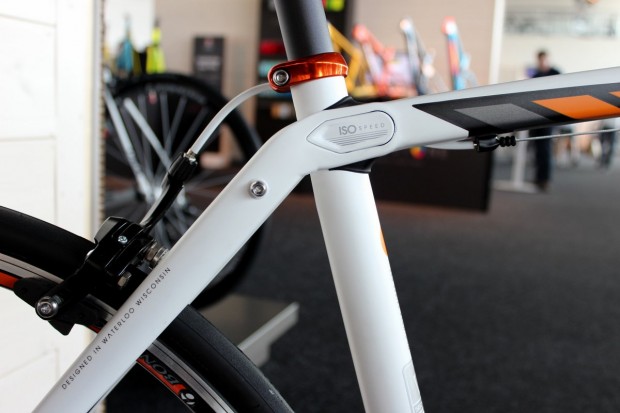
Speaking of which, while there are colour updates across the Trek range, the Domane 2.1 and 2.3 have undergone a significant makeover, with subtle colour-matched components (for example, stem faceplate, seatpost collar and rear mech hanger – orange for the Domane 2.0, green for the Domane 2.3) across the bike. Last year’s frames are also still available.
Madone 6-Series and 7-Series now even lighter
Trek lifted the lid on the lighter Madone 6-Series and 7-Series ahead of the Tour de France. The flagship 7-Series frame, handbuilt in the USA using Trek’s highest grade of carbon fibre, is the lightest in the range at a claimed 725g – a 25g reduction on the previous version.
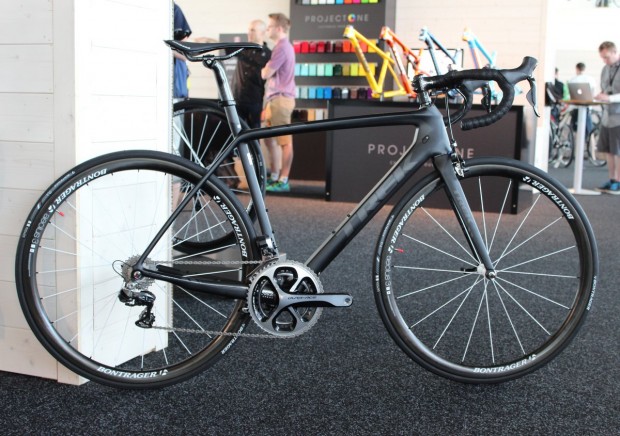
It’s the frame being ridden by the Radioshack-Leopard team (Trek will take over as headline sponsor of the squad next year) at the Tour de France and the frame is available in three consumer models: the 7.9, 7.9 WSD and 7.7.
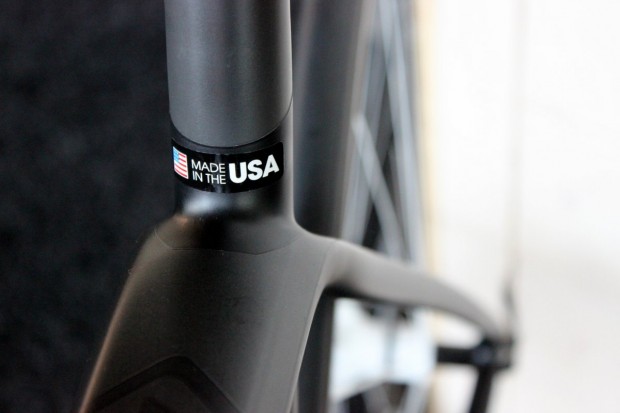
Trek World gave us the opportunity to feast our eyes on the all-singing 7.9. Finished in matte black/grey, the frame is dressed in Shimano Dura-Ace Di2 and Bontrager Aeolus 3 wheels. You can, of course, also create your own money-can’t-buy spec through Project One.
Crockett and CrossRip cyclo-cross unveiled
From road to dirt, the Crockett is Trek’s new race-ready cyclo-cross frame. It’s been developed with three-time World Championship silver medallist Katie Compton and is based around an aluminium frame, using Trek’s premium 200-Series alloy. Aluminium is still the material of choice for many cyclo-cross racers thanks to its strength and stiffness in a discipline where weight is a little less important.
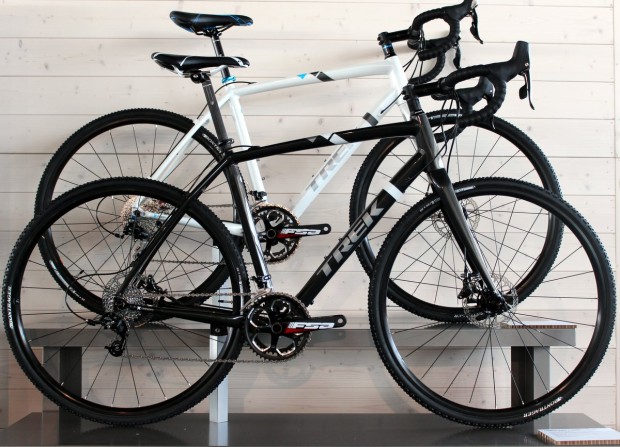
The Crockett is a thoroughbred cyclo-cross bike, with a racy geometry to match. The sweep of the IsoSpeed fork (technology originally developed for the Domane) helps build some compliance into the front end, while ‘cross-specific features include a toptube shaped for shouldering the bike and generous tyre clearance.
Three bikes makes up the Crockett range: the Crockett 7 Disc (£2,000), the Crockett 7 (with cantilever brakes, £1,750) and the Crockett 5 Disc (£1,400).
The Crockett 7 Disc uses SRAM’s new S700 shifters (hydraulic road levers which can be fitted for use with a 10-speed groupset) with Avid hydraulic discs (using 160mm rotors), linked to a SRAM Rival group, while the Crockett 5 Disc is built around Shimano 105 with Avid mechanical discs. We’ve put our name on the list for the Crockett 7 Disc for the forthcoming ‘cross season).
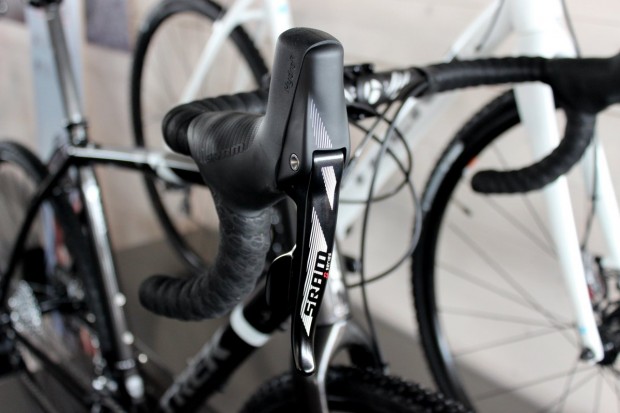
The Crockett effectively replaces the Cronus in the range and Trek are working on a carbon fibre version which will be released “when it’s ready”.
Meanwhile, the CrossRip is Trek’s new do-it-all bike – or, as they call it, a “road bike for the real world”. It’s a road/cross/commuter hybrid, with an aluminium frame, drop handlebar, rack and mudguard compatibility, the ability to take cantilever or disc brakes and, of course, knobbly ‘cross tyres.
Two bikes make up the initial range: the CrossRip Elite is equipped with Shimano Sora shifters and derailleurs, and Hayes CX 5 mechanical disc brakes, for £1,000, while the CrossRip Comp comes with Shimano’s new Claris groupset with Avid BB5 mechanical discs for £875 – making both ripe for the Cycle to Work scheme.
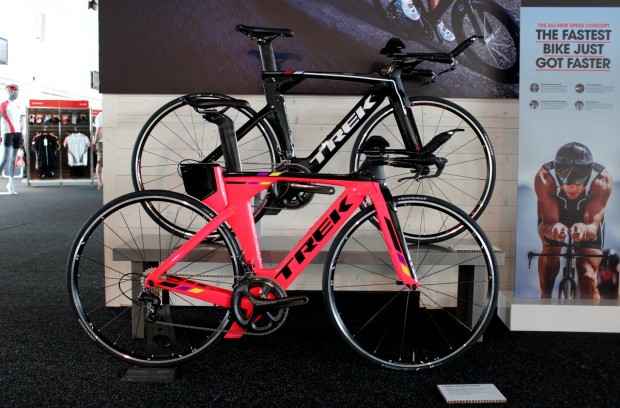
Speed Concept redesigned
Finally, the Speed Concept time trial/triathlon bike has been redesigned. Trek admit their focus has been the triathlon market when redesigning the Speed Concept but the frame can be made UCI-legal with a time trial-specific fork and integrated stem/handlebar, and Fabian Cancellara rode the new machine to victory in the time trial at the Tour of Austria earlier this month. Triathlon-specific features like the ‘speed fin’, which acts as a wind-cheating rear wheel fairing, can be removed.
Key updates include a 437g drop in claimed frame weight, a frontal area which has been reduced by 30 per cent (thereby reducing the area of the bike which cuts through the wind) and tweaked Kammtail tube profiles. Trek have also focused on adjustability and ease of assembly, making it easier for a rider to achieve their desired position. The video above runs through some of the Speed Concept’s key features. Otherwise, three 9-Series models are available, as well as two 7-Series bikes.


